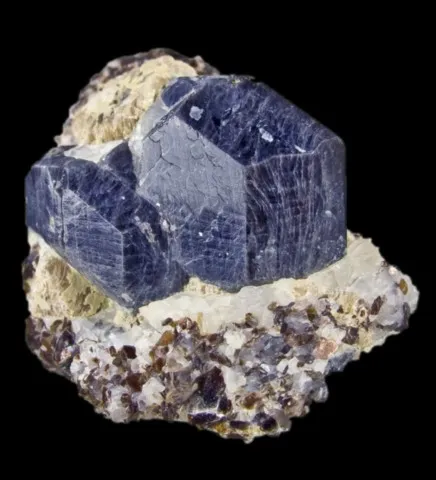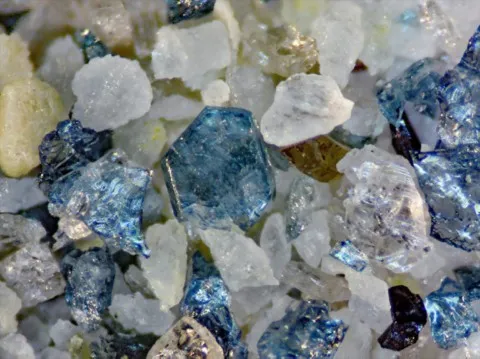SAPPHIRINE
Class : Silicates
Subclass : Inosilicates
Crystal system : Monoclinic
Chemistry : Mg7Al18Si3O40
Rarity : Rare to uncommon
Sapphirine is a rare mineral resulting from intense metamorphism, at the limit of the granulite and amphibolite facies, of aluminous and magnesian rocks poor in silica. Its light blue to blue-black color and vitreous luster are reminiscent of sapphire, hence its name. It most often occurs in microscopic grains, very rarely in flattened crystals up to 5 cm with a pseudohexagonal outline. It is occasionally used as a gemstone.
Main photo : Sapphirine from Morafeno, Tranomaro, Anosy, Madagascar © Rob Lavinsky
Sapphirine in the World
Twinning
No twinning known for this mineral species.
Fakes and treatments
No fakes listed for this mineral species.
Hardness : 7.5
Density : 3.4 to 3.5
Fracture : Irregular to sub-conchoidal
Streak : White
TP : Translucent to transparent
RI : 1.701 to 1.734
Birefringence : 0.004 to 0.005
Optical character : Biaxial -
Pleochroism : Visible
Fluorescence : None
Solubility : Insoluble
Magnetism : NoneRadioactivity : None


